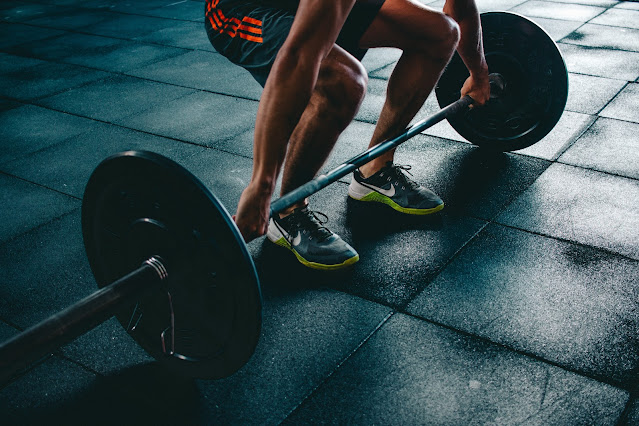Training for Speed: Methods and Benefits Explained
Regarding athletic performance, speed is often a critical factor that can make all the difference. Whether you are a sprinter, a football player, or a martial artist, increasing your speed can give you a significant advantage over your competition. Speed training is a way to improve your speed and agility, allowing you to move faster and more efficiently. This article will explore the different methods and techniques used in training for speed and how to use them to become faster and more agile.
Understanding the Physiology of Speed
Before we delve into the methods used to improve speed, it is essential to understand the physiology of speed. A combination of muscle strength, power, and coordination determines speed. The speed at which you move is determined by how much force you can generate and how quickly you can apply that force. Additionally, your body's ability to coordinate your muscles and move efficiently significantly affects speed.
Different Methods of Speed Training
There are many different methods used in training for speed. Some methods focus on building strength and power, while others focus on improving coordination and agility. Here are some of the most common methods used in speed training:
Resistance Training
Resistance training involves using weights or other forms of resistance to build muscle strength and power. This type of training is commonly used to improve explosive power, which is essential for speed. Exercises like squats, deadlifts, and plyometrics can help build strength and power, improving your speed and agility.
Sprint Training
Sprint training is a form of interval training that focuses on short, high-intensity sprints. This type of training is excellent for improving speed, as it allows you to work on your anaerobic capacity and explosiveness. Sprint training can also improve your cardiovascular health and endurance, making it an all-around beneficial form of training.
Plyometric Training
Plyometric training involves explosive movements that help to develop power and coordination. Exercises like box jumps, lateral jumps, and depth jumps can all help to improve your speed and agility. Plyometric training benefits athletes who must move quickly and change direction frequently.
Agility Training
Agility training focuses on improving your ability to change direction quickly and efficiently. This type of training is crucial for sports like football, soccer, and basketball, where athletes must change direction and move quickly. Exercises like ladder drills, cone drills, and shuttle runs can all help to improve agility and coordination.
Flexibility Training
Flexibility training is often overlooked in speed training, but it is essential for improving your range of motion and preventing injuries. Stretching exercises like the hamstring stretch, quad stretch, and calf stretch can all help to improve flexibility, allowing you to move more freely and efficiently.
The Benefits of Speed Training
Speed training can have numerous benefits for athletes of all levels. Here are some of the most significant benefits of speed training:
Improved Performance
The most apparent benefit of speed training is improved athletic performance. By increasing your speed and agility, you can perform better in your chosen sport, giving you a competitive edge.
Reduced Risk of Injury
You can reduce your risk of injury by improving your strength, power, and coordination. Faster and more agile athletes are less likely to suffer from strains, sprains, and other injuries that can sideline them from the competition.
Increased Confidence
As you improve your speed and agility, you will naturally gain more confidence in your abilities. This can translate into improved performance and a positive mindset on and off the field.
Improved Overall Fitness
Speed training can also improve your overall fitness levels. Incorporating strength, cardio, and flexibility training into your routine can improve your endurance, cardiovascular health, and flexibility, leading to a healthier and more well-rounded lifestyle.
Tips for Effective Speed Training
While there are many different speed training methods, not all are equally effective for everyone. Here are some tips for practical speed training:
Start Slowly
If you are new to speed training, starting slowly and gradually increasing the intensity and duration of your workouts is essential. Overdoing it can lead to injury and set back your progress.
Focus on Proper Form
Proper form is essential in speed training. Ensure you use proper technique and form in all your exercises to avoid injury and maximize results.
Incorporate Variety
Incorporating various exercises and methods can help prevent boredom and plateauing. Mixing up your workouts can also target different muscle groups and improve overall performance.
Rest and Recovery
Giving your body time to rest and recover is equally as crucial as the actual training. Ensure you allow your body enough time to rest and recover between workouts to prevent injury and improve performance.
Conclusion
In conclusion, speed training is a crucial aspect of athletic performance for many athletes, including those working with Will Bradley Sports Performance. By incorporating resistance training, sprint training, plyometric training, agility training, and flexibility training into your routine, you can improve your speed, agility, and overall athletic performance under the guidance of our expert trainers. Remember to start slowly, focus on proper form, incorporate variety, and allow for rest and recovery to maximize results and prevent injury. With dedication and consistency, you can become a faster and more agile athlete, giving you a competitive edge in your chosen sport with the help of Will Bradley Sports Performance.

.jpg)
Comments
Post a Comment